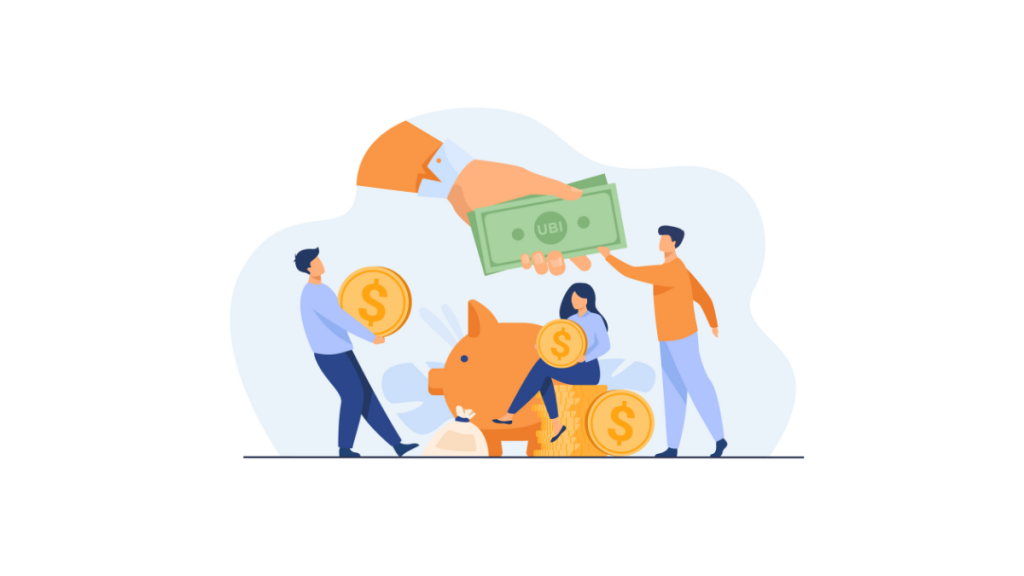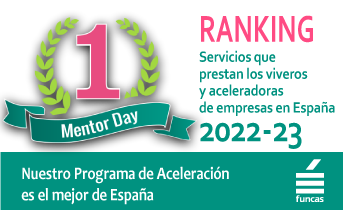MONETISATION
Accelerate your business with these expert tips on "Monetisation". Analyse and discover this TIP!
HOW DO YOU MONETISE = DO YOU MAKE MONEY BY SELLING?
One of the most important points of any business model and where we have to show a lot of realism is in the revenue part of your business model. CANVAS (+). A business model (+) that it starts from many revenue streams (from many, many, many customer segments (+), products....) all it indicates is that you have no idea how you are going to make money... which in itself is not a problem, but it implies that you will have to have money and time to explore. REMEMBER TO HAVE FOCUS!!!!
Furthermore, we only consider (or imagine) how much money we are going to earn, but not how much it will cost us to earn it... which is closely linked to the previous point. If in your business model you spend more money on a stable basis on attracting customers (customer acquisition cost) that the margin you get from them (customer lifetime value) you have a problem... obvious? No doubt you do. But do you really know how much money it costs you to attract each customer?
There are dozens of ways to make money in your business model. I will show you different business models to open your imagination with real examples that work very well:
BUSINESS MODELS:
FREEMIUM MODEL (+)
DIRECT SALES REVENUE MODEL (+)
ADVERTISING REVENUE MODEL (+)
AFFILIATION MODEL TO ENGAGE WITHOUT CONVERTING (+)
SUBSCRIPTION-BASED MODEL, THE MOST ROBUST (+)
BAIT AND HOOK MODEL, FIRST FREE, THEN PAY (+)
P2P (PEER TO PEER) REVENUE MODEL (+)
TRANSACTION PROCESSING REVENUE MODEL (+)
LICENCE SALES REVENUE MODEL (+)
REVENUE MODEL FOR DATA SALES (+)
MOBILE SALES REVENUE MODEL (+)
GAMING REVENUE MODEL (+)
How will you monetise your idea?
Monetisation refers to the The process of generating revenue through a business model or a revenue-generating strategy in a business or project. In other words, it is about turning something into money. Monetisation can involve a wide variety of strategies, such as the sale of products or services, advertising, subscription, sponsorship, software licensing, among others.
For example, a mobile app can generate revenue through the sale of in-app advertising, the sale of premium services to users, the sale of user data to third parties, among other monetisation strategies. It is important to note that the monetisation strategy must be carefully planned to ensure long-term profitability and customer satisfaction.
In short, monetisation is a fundamental part of the business model and can be key to the success of a project or company.
Why is monetisation important in a start-up?
Monetisation is important in a new business because it is the way revenues are generated that allow the business to grow and stay in business. Monetisation is the process of turn an idea, a product or a service into a profitable and sustainable source of income for the company.
It is necessary for a company to have a clear and viable monetisation model from the start, as this will provide a source of funding and allow the company to grow and expand. In addition, monetisation allows the company to cover its expenses, invest in research and development, hire talent, improve its products and services, among other key aspects for business success.
A well-developed monetisation strategy can also help a company differentiate itself from its competition and stand out in the market. Monetisation is therefore a crucial factor for the success and survival of any business, especially for start-ups that are in a critical phase of growth and consolidation.
THERE ARE SEVERAL TYPES OF MONETISATION FOR A START-UP. SOME OF THE MOST COMMON ARE:
- Direct sales: is the direct sale of products or services to customers.
- Advertising: the company can monetise through advertising by allowing other companies to display advertisements on its website or on its products.
- Subscriptions: customers pay a monthly or annual fee for access to a specific service or product.
- Commissions: the company earns a commission on sales made through its platform.
- Licences: the company charges a fee for the use of its products or services, often through licensing agreements.
- Freemium: the Freemium model offers free basic services and paid premium services.
- Crowdfunding: the company receives funding from individuals or groups interested in its project or product.
- Sale of data: the company can monetise the information collected from users of its platform.
- Franchising: the company can monetise through the sale of franchises of its business model.
It is important to note that not all monetisation models are suitable for all companies. Each company must analyse its business model and find the most appropriate monetisation strategy for its specific case.
How can an entrepreneur design the right monetisation of his start-up?
Designing the right monetisation for a new venture can be a complex process that requires a thorough understanding of the market, customers and current trends.
SOME STEPS AN ENTREPRENEUR CAN TAKE TO DESIGN THE RIGHT MONETISATION ARE:
- To have a thorough understanding of the business model: it is important to have a clear understanding of how the company's business model works. This includes having a clear idea of the products or services offered, the target audience and how the products or services are delivered.
- Analyse the market and competition: it is important to analyse the market and the competition to see how similar businesses are monetising in the market and whether there are opportunities to offer something new or better.
- Identify the needs and wishes of the client: In order to design appropriate monetisation, it is important to understand the needs and wants of the customer. This can be achieved by conducting surveys, market research and data analysis.
- Test different monetisation models: Once customer needs and wants have been identified, different monetisation models can be tested to see which works best. This may involve offering different pricing or subscription plans and evaluating customer responses.
- Remain flexible: it is important to remain flexible and adapt as market and customer needs change. This may involve adjusting prices, adding new features or changing the monetisation strategy completely.
In short, to design an appropriate monetisation for a new venture, an entrepreneur must know his or her business model, analyse the market and competition, identify customer needs and wants, test different models and remain flexible.
How do you validate the correct monetisation of a business model?
Monetisation validation involves checking whether the revenue strategy that has been designed for the company is effective and profitable.
THE FOLLOWING STEPS CAN BE TAKEN FOR THIS PURPOSE:
- Conduct market testing: Before launching the product or service on the market, tests can be carried out with a small group of users or customers to check whether the monetisation strategy is appropriate. In this phase, prices, payment options, advertising, etc. can be adjusted.
- Measure the right metrics: It is important to measure metrics to assess whether the monetisation strategy is effective, such as customer acquisition cost (CAC), customer lifetime value (LTV), return on investment (ROI), conversion rate, etc.
- Conduct cost-benefit analysis: It is essential to assess whether the revenues generated by the monetisation strategy are sufficient to cover the company's costs and generate profits. To do this, profitability analyses can be carried out and compared with other companies in the sector.
- Collect feedback from customers: It is important to collect feedback from customers on the monetisation strategy, to get their opinion on pricing, payment options, advertising, etc. This will allow you to adjust your monetisation strategy according to your customers' needs and preferences.
In short, monetisation validation involves market testing, measuring the right metrics, conducting profitability analysis and collecting customer feedback to adjust the monetisation strategy and ensure the profitability of the company.
Why are investors interested in the monetisation of a startup before investing?
Investors are interested in the monetisation of a startup before they invest because they want to ensure that the company has a clear and viable strategy to generate long-term revenue and be profitable in the future. If a company does not have a clear way of monetisation, it is less likely to attract investors willing to invest large amounts of money.
In addition, investors want to know that the company has conducted research and identified a need in the market that it is willing to pay to address, which further supports the company's monetisation strategy. In short, investors are looking for companies with a strong monetisation strategy that will deliver a sustainable and profitable return on investment over the long term.
APPLY THIS TIP TO YOUR PROJECT
TASK
CASE STUDY OF AN ENTREPRENEUR LOOKING AT THE PROPER MONETISATION OF HIS NEW VENTURE
Juan is an entrepreneur who has just started his company, an online legal advice subscription platform. Juan is excited about his project and wants to start promoting it and selling subscriptions, but before doing so, he wants to make sure he has chosen the right monetisation model.
To explore the right monetisation for his new venture, John begins by researching his competitors and the different ways they monetise their services. After a thorough analysis, Juan decides that the best monetisation model for his platform is the monthly subscription model.
To validate his choice, Juan conducts a pilot test by offering a free monthly subscription to his first 100 users. He then meets with them to get feedback on their experience and ask them if they would pay for a similar service. With the results of the pilot test, Juan decides that his monetisation model is effective and begins to promote his platform.
As the company grows and gains more users, Juan continues to evaluate monetisation and make adjustments as needed to ensure he is maximising his revenue potential. Over time, his company becomes a successful source of revenue and his investors feel confident that they have invested in a company with a solid monetisation model.
QUIZ
- 💻 PRACTICE with an expert in the next practical webinar.
- 🔎 CONSULT more related TIPs with this same theme.
- 📖 AMPLIA your knowledge by downloading this EBOOK.
THINK ABOUT YOU
- 🚀 IMPULSA your company in the next acceleration programme, ¡book your place now!
- 🥁 PRACTICE with your project in this practical webinar, ¡apply for your place!
- 🌐 CONTACT with other entrepreneurs and companies, ¡register and take part in the next Networking!
THINK ABOUT HELPING OTHERS
- 🤝COLLABORATE as a volunteer: expert, mentor, inverter, awarding, Spreading the word, challenging, innovating, creating a TIP...
- 💬 RECOMMENDS this programme to reach out to more entrepreneurs by Google.
- 👉 SHARE your learning!
- 📲 SEND this TIP 👇









